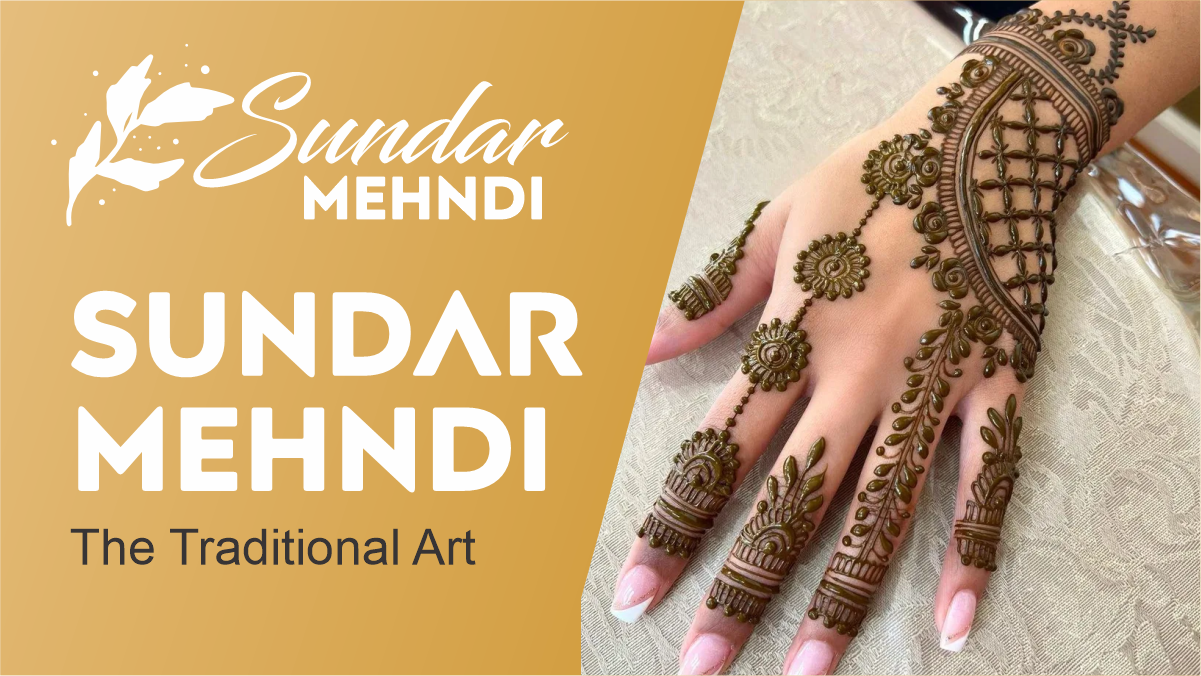Table of Contents
Introduction
Henna, known as Mehndi in many cultures, is a beautiful, intricate art form that has been practiced for centuries. Sundar Mehndi, in particular, is a style that elevates this traditional art with exquisite detail and modern flair. This article delves into the history, cultural significance, and contemporary relevance of Sundar Mehndi.
Historical Background
Henna has a rich history that dates back to ancient Egypt, where it was used for its cooling properties and decorative purposes. Over the centuries, it spread to various cultures in the Middle East, South Asia, and North Africa, becoming an integral part of their traditions and rituals.
Traditional Uses of Henna
Henna is traditionally used during weddings, festivals, and religious ceremonies. It symbolizes joy, beauty, and spiritual awakening. In many cultures, the application of henna is a sacred ritual, believed to bring good luck and protect against evil.
The Art of Sundar Mehndi
What sets Sundar Mehndi apart is its meticulous designs and innovative techniques. Artists use fine tools and natural henna paste to create stunning patterns that can range from floral and geometric motifs to elaborate storytelling through intricate designs.
Popular Designs and Patterns
Traditional Sundar Mehndi designs often feature paisleys, flowers, and vines. Modern interpretations incorporate contemporary elements like geometric shapes and even personalized symbols. Each region has its unique style, adding to the diversity of this art form.
Henna in Contemporary Culture
Henna has experienced a renaissance in recent years, largely thanks to its presence in fashion and entertainment. Celebrities sporting henna tattoos, along with the power of social media, have made henna more popular than ever.
Henna Application Process
Creating henna art involves preparing a smooth, consistent paste from henna powder, lemon juice, and essential oils. The artist then uses a cone or brush to apply the design, which is left to dry and darken over several hours. Aftercare involves keeping the henna moist and avoiding water for the best stain.
Benefits of Henna
Beyond its aesthetic appeal, henna has several benefits. It’s a natural conditioner for hair, has cooling properties for the skin, and is believed to have spiritual and emotional healing effects.
Challenges in Henna Art
Despite its popularity, henna art faces challenges. Preserving traditional techniques in the face of commercialization, dealing with the health risks posed by synthetic henna, and maintaining the authenticity of the art are ongoing concerns for artists.
Sundar Mehndi Artists
Prominent henna artists around the world continue to innovate and inspire. These artists often train for years, honing their skills and collaborating within a vibrant community that values tradition and creativity.
Henna in Festivals and Celebrations
Henna plays a crucial role in cultural festivals and celebrations. Henna competitions and exhibitions showcase the best of this art form, while global henna gatherings foster a sense of community and shared passion.
DIY Henna at Home
For those looking to try henna at home, starting with simple designs is best. Tips for a successful application include ensuring the paste is the right consistency and practicing on paper before applying to the skin.
Henna Products and Kits
Selecting the right henna products is crucial. Look for natural, eco-friendly henna brands and kits that include all necessary tools. Avoid products with synthetic additives, which can cause allergic reactions.
Future of Sundar Mehndi
The future of Sundar Mehndi looks promising, with trends leaning towards more personalized and intricate designs. Innovations in henna application continue to emerge, allowing for greater self-expression through this timeless art.
FAQs
- What is Sundar Mehndi?
- Sundar Mehndi is a style of henna art known for its intricate and detailed designs, combining traditional motifs with modern elements.
- How long does henna last?
- Henna typically lasts one to three weeks, depending on skin type, aftercare, and the quality of the henna used.
- Is henna safe for everyone?
- Natural henna is generally safe, but some people may have allergic reactions, especially to synthetic henna. It’s always best to do a patch test first.
- Can I make my own henna paste?
- Yes, you can make your own henna paste using natural henna powder, lemon juice, sugar, and essential oils.
- What should I do if I have an allergic reaction to henna?
- If you experience an allergic reaction, wash the area with soap and water, apply a soothing lotion, and seek medical advice if necessary.
